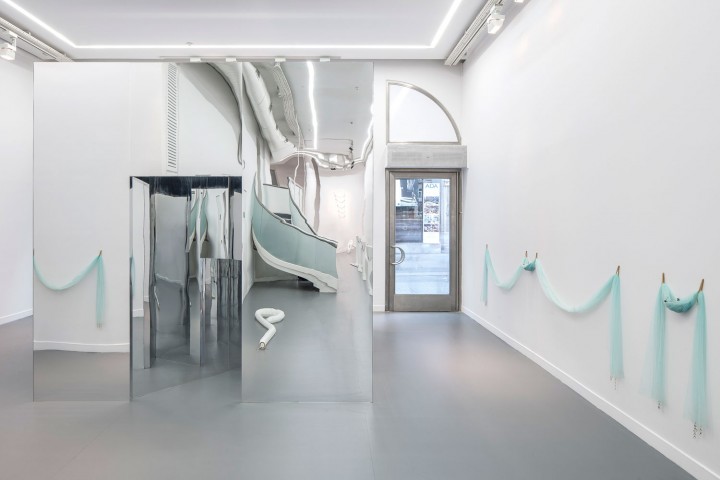Upon entering ARTER, a rich array of sculptural installations and sketches embraces the visitor and leads them on a playful journey. Some works investigate the construction of space, while others translate music into a visual language. Following a path of contiguous and intuitive connections among forty artworks spread out over four floors, “Through the Looking Glass” presents a comprehensive survey of Füsun Onur’s outstanding artistic production since the 1960s.
Presented as a complimentary gesture for the entire exhibition is the work Home (2014) by Ali Kazma. Home is a video work that takes place at a small waterfront house in Istanbul, where Füsun Onur was born and still lives and works with her sister İlhan. The importance of these relationships — between the house, Onur’s practice and her sister — is further emphasized by curator Emre Baykal’s passionate exhibition catalogue text.
The Turkish contemporary art scene has provided few large-scale retrospective exhibitions for its most cherished artists. In light of this, Onur’s exhibition provides a decisive moment in which audiences can be introduced to an extensive body of work while also contemplating the lack of such attention for other pioneering artists.
While the exhibition at ARTER illustrates Onur’s dreamlike world through installation works such as Those Who Have Washed Here (1994), Let’s Meet at the Orient (1995) and Ladder (2008), it also reveals an oscillating interrelationship between her notions of sculpture and painting. On the one hand, the exhibition dives into a domestic milieu that she creates with light and shadow in Icons of Time (1990) or with objects that are not originally intended to function as artworks. On the other hand, the exhibition restages her earlier projects and exhibitions such as Counterpoint with Flowers (1982–2014). The overall result is a wonderfully dreamlike feeling of a silent journey somehow suffused with music.
.



